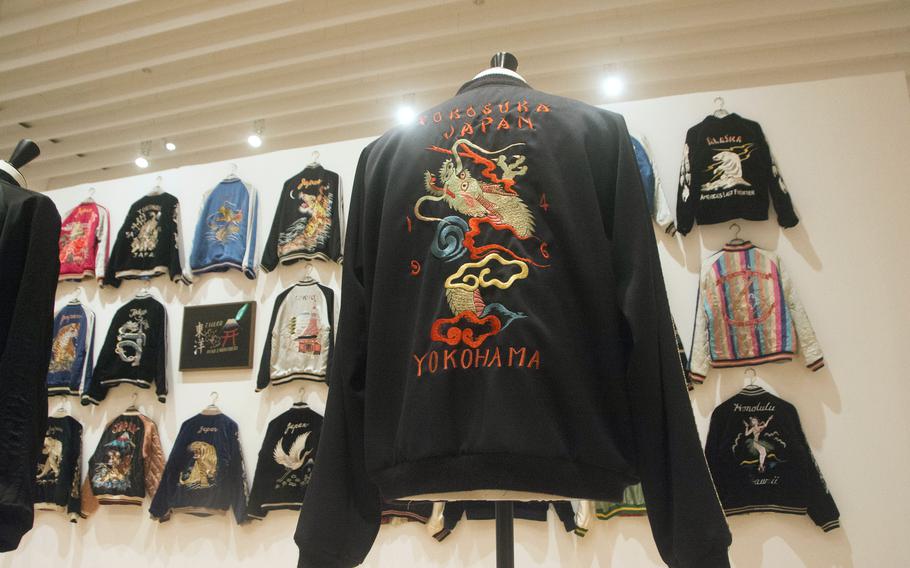
Draped carefully along the walls of the Yokosuka Museum of Art this month are scores of souvenir jackets called “sukajan” that range from vintage 1950s apparel to modern designer fashion. (Akifumi Ishikawa/Stars and Stripes)
Embroidered images of imposing dragons and fearsome tigers, often accented by falling cherry blossoms or images of Mount Fuji, are waiting at the Yokosuka Museum of Art to take visitors on a journey through the close relationship between Yokosuka and the U.S. Navy.
Draped carefully along the walls of the museum this month are scores of souvenir jackets called “sukajan” that range from vintage 1950s apparel to modern designer fashion.
Curated under the “Pride of Yokosuka” exhibit, which runs through Dec. 25, sukajan are emblematic of both evolving fashion trends and the Navy’s profound impact on the city’s culture.
Originally sold as souvenirs to U.S. sailors stationed in Japan after World War II, the jackets quickly became the mainstay of Dobuita Street and local fashion. The baseball-inspired jackets were so popular, they eventually became known as “sukajan,” which is short for “Yokosuka jumpers” in Japanese, according to the museum.
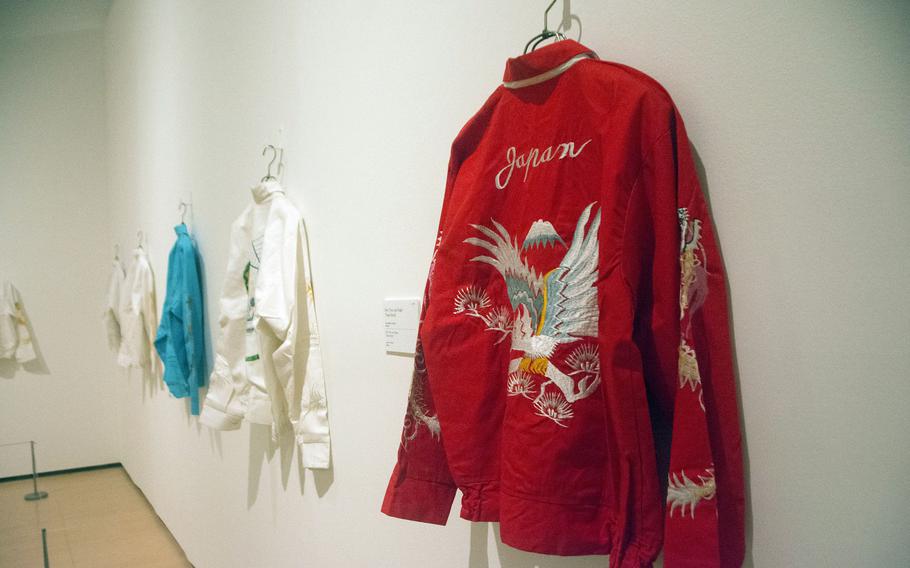
Draped carefully along the walls of the Yokosuka Museum of Art this month are scores of souvenir jackets called “sukajan” that range from vintage 1950s apparel to modern designer fashion. (Akifumi Ishikawa/Stars and Stripes)
Visitors to the museum can see some of the first examples of sukajan, which were often hand-embroidered and customized for individual sailors. The older jackets, which often feature dragons, tigers, eagles or Japanese scenery, went on to inspire decades of variations that remain a popular tourist item today.
The vintage jackets often used “yokoburi” embroidery, meaning that artisans made the jackets one at a time by hand. The symbolism behind images such as the dragon or tiger often directly targeted service members’ interests at the time.
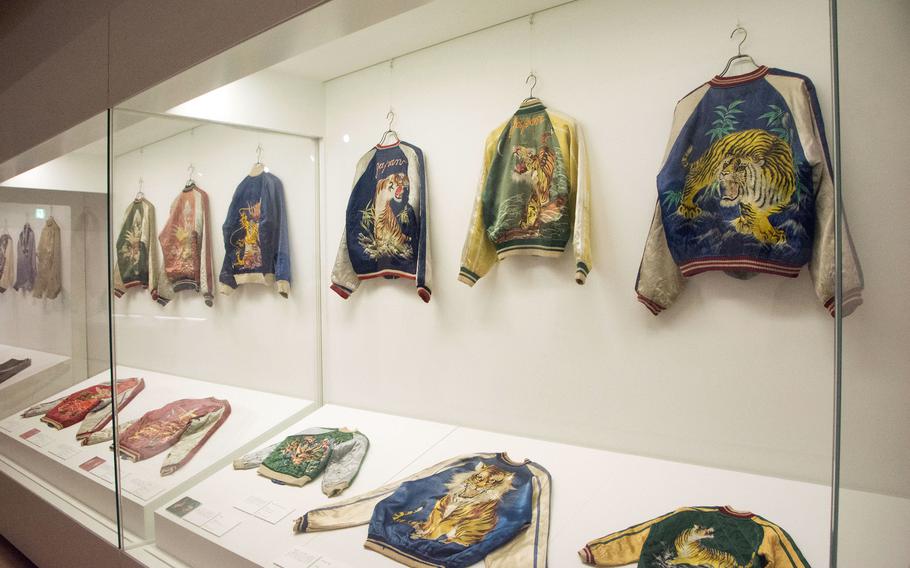
Originally sold as souvenirs to U.S. sailors stationed in Japan after World War II, sukajan quickly became the mainstay of Dobuita Street and local fashion. (Akifumi Ishikawa/Stars and Stripes)
“Tigers, which are widely distributed in Asia, top the natural world with overwhelming power,” an exhibit placard reads in Japanese. “With this in mind, it’s a design that’s popular among U.S. service members and the beautiful expression of unique tiger-stripes by yokoburi embroidery also attracted many people.”
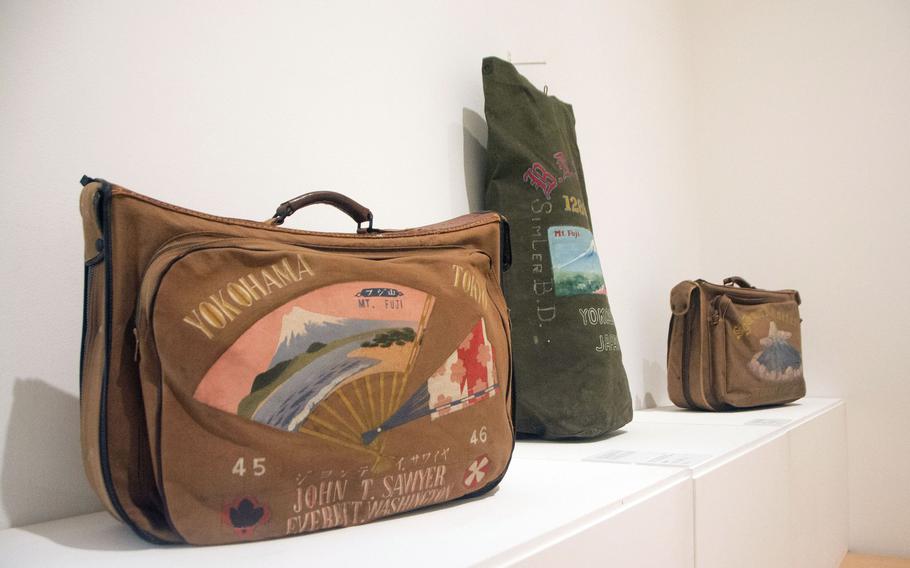
Custom suitcases, portraits painted on silk, cushion covers, embroidered Navy uniforms and even receipts from the Navy Exchange circa 1966 are available for viewing this month at the Yokosuka Museum of Art. (Akifumi Ishikawa/Stars and Stripes)
More modern pieces in the collections include a sukajan-inspired pair of shoes, a collaboration between Rollicking and Vans, and a limited edition sukajan from contemporary designer Yohji Yamamoto valued at more than $1,600.
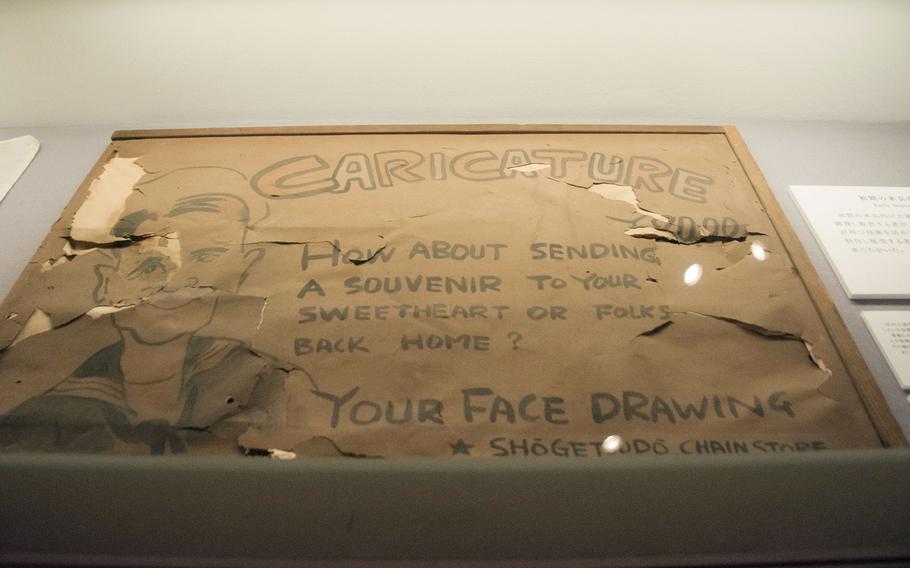
Custom suitcases, portraits painted on silk, cushion covers, embroidered Navy uniforms and even receipts from the Navy Exchange circa 1966 are available for viewing this month at the Yokosuka Museum of Art. (Akifumi Ishikawa/Stars and Stripes)
In addition to the sukajan are dozens of other historical memorabilia that highlight U.S. influence on Yokosuka commerce. Custom suitcases, portraits painted on silk, cushion covers, embroidered Navy uniforms and even receipts from the Navy Exchange circa 1966 are available for viewing.
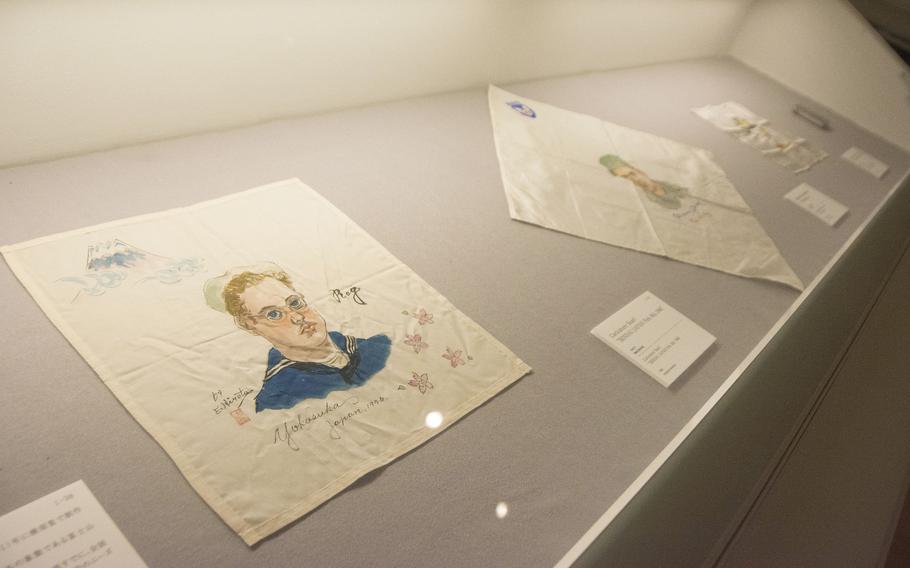
Custom suitcases, portraits painted on silk, cushion covers, embroidered Navy uniforms and even receipts from the Navy Exchange circa 1966 are available for viewing this month at the Yokosuka Museum of Art. (Akifumi Ishikawa/Stars and Stripes)
Location: 4-1 Kamoi, Yokosuka-shi, Kanagawa 239-0813
Directions: From Yokosuka-chuo Station, take either the No. 2 or No. 4 bus to Kannonzaki Keikyu Hotel for a 380 yen fare, or $2.83.
Hours: Daily 10 a.m. to 6 p.m.; closed Dec. 29 to Jan. 3
Costs: 1,300 for adults; 1,100 for 65 and older; free for junior high school students and younger. Discount of 20% for those who wear sukajan to the exhibit.
Food: Italian restaurant on site.
Information: Online: yokosuka-moa.jp/en